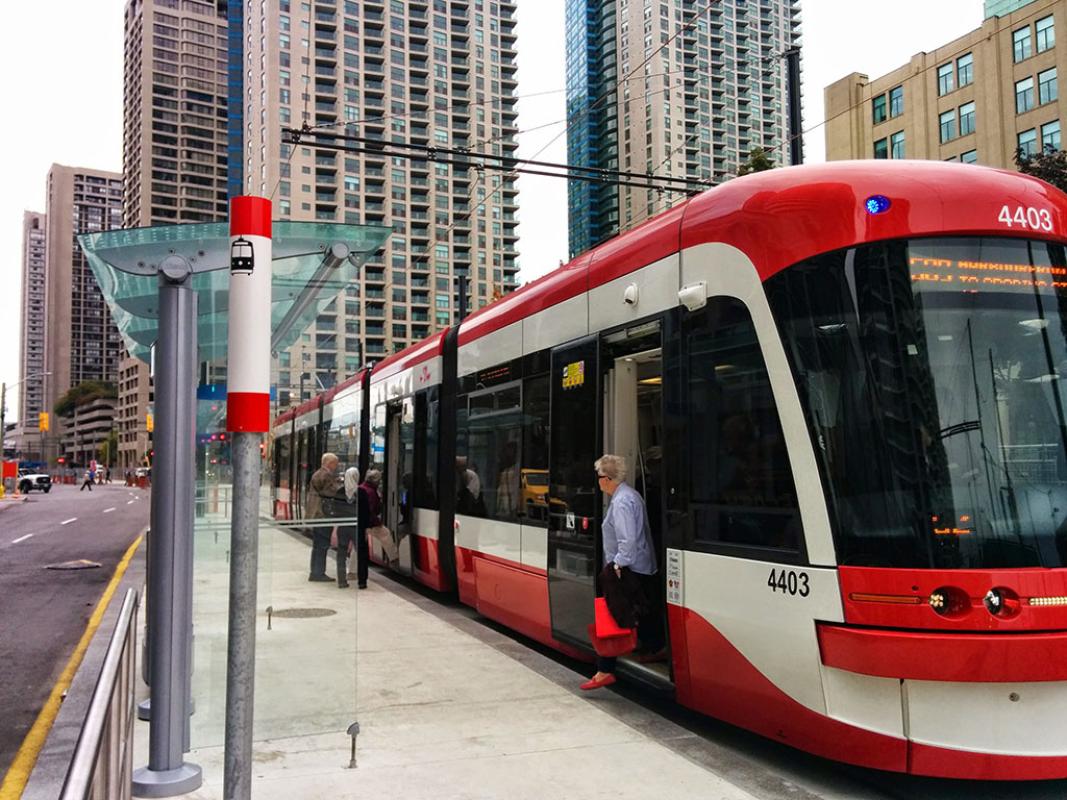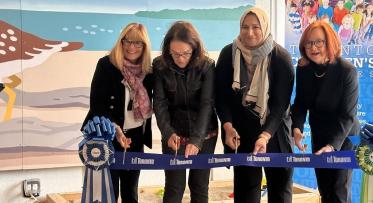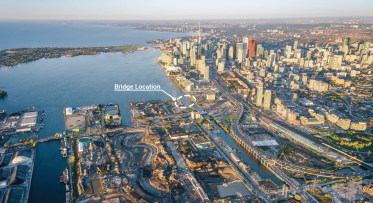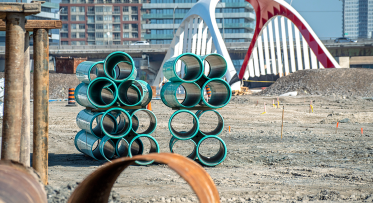Making Transit a Priority: Optimizing Signalization on Queens Quay
The 509 Harbourfront and 510 Spadina streetcars have returned to Queens Quay, marking a major milestone in the revitalization of Toronto's waterfront boulevard.
POSTED: OCTOBER 14, 2014
BY: SAMANTHA GILENO
Streetcars are operating on Queens Quay again. And while it’s a major milestone for the project – and for people who ride the streetcar – it’s important to note that construction continues and the street will not operate in its final configuration until the road is commissioned next year. A huge amount of thought and effort has gone into designing a state-of-the-art signal system that will give transit priority and at the same time allow cars to move better than they did before on Queens Quay. But until that system is up and running, the signalization in place today – including the number of signalized intersections – is temporary.
To keep transit moving during construction, there is currently a dedicated transit phase which allows streetcars to proceed while all other vehicular and pedestrian movements are stopped. Over the next few days, we will be assessing these signals to make sure they are working as effectively as possible during construction. We appreciate your patience as we make the interim signal timing more efficient.
Once the road is commissioned next spring, the full transit priority signalization plan will be implemented. This will include the installation of all new traffic and transit signalization controllers along Queens Quay. These new controllers will allow for much more sophisticated transit priority operations along Queens Quay. Once the new system is up and running:
- Streetcars will stop less frequently because their signals will be coordinated with those used by east-west vehicular traffic. That means both streetcars and vehicles will travel together giving streetcars the maximum amount of time to clear the intersection.
- The system will include up to a 15 second extension of the east-west green if a streetcar is within a close distance of the intersection. If a streetcar is waiting, and there are no other vehicles in the area, the system can also shorten the length of a red light at a north-south crossing. This will help reduce the number of times a streetcar is stopped at a red light.
- The corridor will be optimized to ensure that traffic signals are coordinated reducing the number of stops and starts which lead to slower overall travel times.
- Temporary intersections will be removed resulting in fewer stops for streetcars and vehicular traffic.
Completely rebuilding – and reconfiguring – a street in a dense urban area is complicated. It’s a bit like preparing a formal dinner with several different courses. As we complete major sections of work, such as sidewalks, stretches of roadway or the streetcar corridor, we re-open those areas for public use. But to continue with the dinner analogy, we’re still working on the final courses and the meal can only fully be enjoyed after we’ve finished dessert.
Queens Quay is on schedule to be complete before the Pan Am Games. Thanks for your patience as we continue to build Toronto’s new waterfront boulevard.




